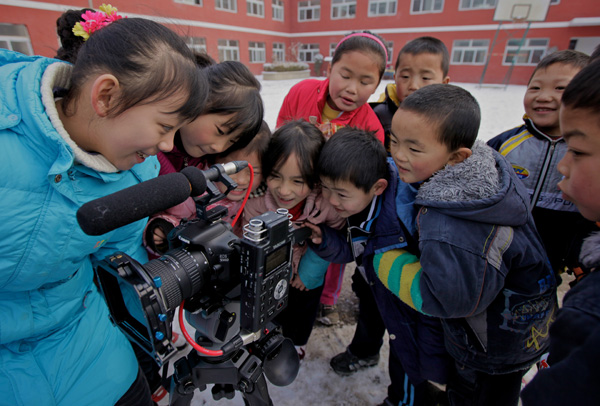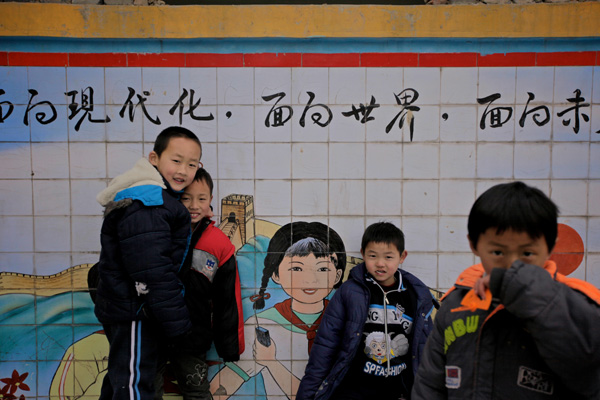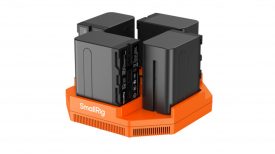Guardian reporter Tania Branigan and I have been wanting to make a report about the children of migrant workers for a while now. Although many of them were born in Beijing, their access to education and other services is limited because of China’s household registration system, the hukou. It basically divides citizens into urban and rural dwellers and assigns them various rights. It made more sense in the 1950s, when China was a planned economy, but has created huge problems now that tens of millions of Chinese farmers have moved to cities to find work. Because the hukou is inherited, their kids struggle to access basic services too.
I knew that the best way to tell this story would be through the life of a child. We were fortunate to find a great subject in eight-year-old Yuhui, whose parents will do anything to ensure she gets a good education. Like many migrant kids, she has not been able to get a place in a state school and instead goes to a privately-run place in the city.
We had been trying to set up a visit to the school for a while and as luck would have it managed to arrange it just as my 550D cameras arrived. I couldn’t resist the opportunity to try them out on an assignment. I wanted the video to mix conventional news reporting with documentary style.

For the shoot I used both my 550D cameras shooting at 1080/25p, one rigged for slider action and the other in a regular configuration. I had a good range of lenses with me. the Zeiss ZE 28mm f2, 50mm f1.4 and 85mm f1.4, the Tokina 11-16mm f2.8, a Canon 100mm 2.8 macro lens and a 135mm f2 Canon lens. To aid focus I fitted my Zacuto Z-finder – the same one I use with my other Canon cameras.
I chose to shoot using just natural light and work around it – the interiors were all between 200 and 800 asa at between f2.8 and f5.6 , avoiding the ultra shallow depth of field look. This was an aesthetic choice as I felt it just made the end result a bit more ‘real’.
The two sliders – my small Singapore-made one and a larger Glidetrack – were also critical to the look of the piece. For the uninitiated, these are metal rails with small carriages that move along them, simulating the look of a traditional tripod dolly over short distances. The longer Glidetrack was mounted on my Miller DS-20 at one end and a light stand at the other – this setup was used for most of the slides. My mini Singapore slider was used in tight spots or for putting straight onto a table for close up-sliding.
Unlike on many news assignments, I had the time to stay and shoot over a longer period. Once the children got used to me and my camera being in the classroom they settled down and this allowed me to get far more natural shots.

For the outside shots I used 4×4 glass ND filters in a Genus mattebox (with Sunshade removed to try and keep a low profile). I would normally use a Fader ND filter for speed but in this instance, with a little more time on my hands, I thought I would go for the best quality possible.
As with the 7D and 1DmkIV the mic input only has automatic gain control and is pretty useless for high quality audio. Instead I used my new Tascam DR-100 field recorder with a Sanken CS-1 mic attached via XLR. I then synced the sound with the in-camera audio using Bruce Sharpe’s amazing Pluraleyes software for Final Cut Pro.
Editing was quite straightforward. I converted the clips to Prores 422 LT using MpegStreamclip before dropping them into Final Cut Pro. While I don’t usually put much of a grade on my news videos I felt that this feature deserved to be slightly more stylised – nothing too drastic; just a bit of a film look with a slight vignette on most shots, all done in Magic Bullet looks.
In terms of subject and technique this is one of the most satisfying short news features I have done. The performance of the 550D was nothing short of stunning for such a small, inexpensive camera. To my mind the equipment is not the barrier to creating great-looking news videos any more; it’s all about investing time in learning the skills and coupling it with some good old fashioned journalism.

To read Tania Branigan’s story on Migrant workers on the Guardian click here







